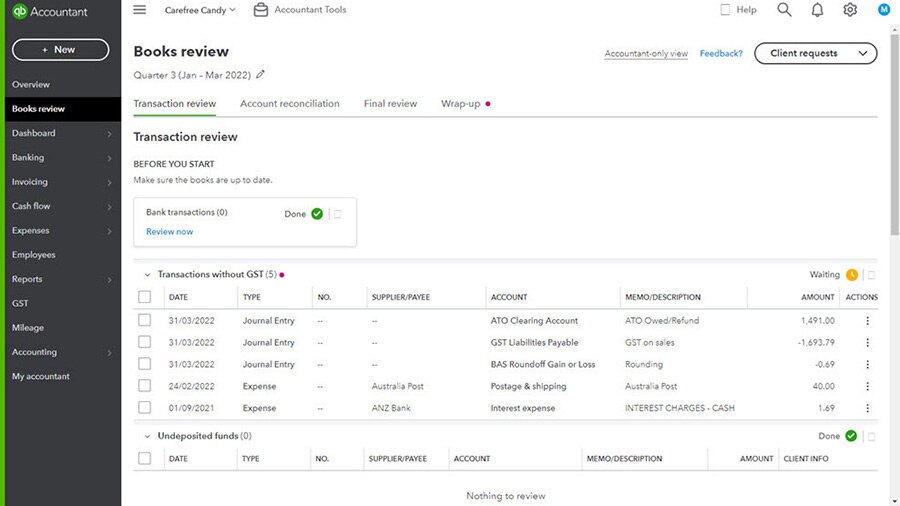Notably, Healthcare and Social Assistance experiences the highest absolute number of job changes, with 175,400 workers changing positions. The hospitality industry (Accommodation and Food Services) also shows significant movement with 88,100 job changes, reflecting the sector's traditionally high turnover percentage.
Causes of employee turnover
While some level of staff turnover is normal, you don’t want to see your best employees leaving. Let’s look at the main causes of unwanted headcount turnover:
Employee burnout
Employee burnout can cause emotional and physical exhaustion. It’s important that you catch it as soon as possible, because it can quickly lead to disengagement, low morale, and increased worker turnover.
Burnout can happen if employees:
- Don’t have the support and tools they need to do their jobs effectively
- Feel they are being micromanaged or bullied
- Are expected to work overtime or go above and beyond the scope of their role
- Are pushed to deprioritise their personal lives in favour of work
Actionable steps:
Monitor workloads, encourage work-life balance, and provide mental health support to prevent burnout.
Low pay and/or benefits
Competitive compensation helps retain employees and reduces workforce turnover. Research consistently shows that inadequate pay or benefits are primary reasons for a high turnover rate and employee dissatisfaction statistics.
Offering above standard compensation not only shows that you value your employees’ contributions, but also makes it more difficult for competitors to lure away your talent with financial incentives.
Actionable steps:
Regularly review salary benchmarks, offer competitive benefits, and make sure employees feel valued through generous compensation.
Weak culture
Cultural issues like micromanagement and poor team dynamics can drive worker turnover. On the flip side, you can develop a flexible, supportive and open culture to foster a sense of belonging and encourage employee retention.
Actionable steps:
Create a positive workplace culture by encouraging teamwork, promoting transparency, and addressing any toxic behaviours promptly.
Low engagement
Unsurprisingly, low employee engagement is a major contributor to workforce turnover. Employees leave because they're bored, disconnected from their work, or feel unrecognised for their efforts. Leaders should provide support and feedback, and encourage development and growth.
Actionable steps:
Conduct regular check-ins, recognise employee contributions, and create opportunities for career growth and skill development.
How to calculate your employee turnover rate
Your employee turnover rate is the percentage of employees who leave your business during a certain period.
To complete your annual turnover calculation, use the following formula:
Number of employees who left ÷ ((Beginning + ending number of employees) / 2) × 100 = Annual employee turnover rate %
Example:
Let's say you started the year with 10 employees and hired two more during the year. Three employees left your business, leaving you with nine employees at year-end.
Your turnover calculation would be:
3 ÷ ((10 + 9) / 2) × 100 = 31.6%
Comparing your staff turnover rate against previous years and industry averages can give you valuable context. If your turnover rate exceeds your industry's average, there might be room for improvement in your retention strategies.
How to interpret staff turnover rates
So you've crunched the numbers and calculated your turnover percentage – but what do these figures actually mean for your business? Making sense of these statistics isn't as straightforward as it might seem at first glance.
To properly interpret what your turnover rate is telling you, you'll need to look at it from several different angles. Let's break down what you should consider when making sense of your staff coming and going:
- Benchmark Against Industry Standards: Compare your employee turnover rates against Australian industry norms using data from the Australian Bureau of Statistics (ABS). This provides context for whether your turnover percentage is typical for your sector or if you have a problem retaining staff.
- Assess the Nature of Turnover: Are the departures voluntary or involuntary? Which roles or departments experience the highest turnover rate? By identifying problem areas, you can target your interventions.
- Compare to Internal Historical Data: Track your employee turnover rate over time to identify patterns or trends. If you’re seeing increases, you might have undetected issues. Is your turnover percentage dropping? Good news – your retention strategies are working.
- Analyse the Cost Implications: To get a clear picture of how workplace turnover affects your business, calculate its financial impact – including recruitment, onboarding, training costs, and productivity losses.
- Look at Exit Interviews & Employee Surveys: Collect qualitative data through exit interviews and employee satisfaction surveys. By understanding the reasons behind your turnover rate, you can find ways to improve your retention strategy.
- Consider Economic & Market Conditions: Assess external factors like economic downturns, industry disruptions, and local employment markets that might influence your headcount turnover. These factors are beyond your direct control, but a healthy workplace culture can encourage employees to stay during tough times.
How employee turnover can impact your business finances
A high staff turnover rate can have big consequences for your business finances.
According to Gallup, losing an employee typically costs between 1.5 - 2 times their annual salary.
Other cost factors include:
- Expenses for job ads, interviews, screening, and hiring processes
- Costs associated with onboarding, training, and equipping new employees
- Lost productivity during transition and training periods
Strategies to reduce staff turnover
Looking to keep your best people on board? There are practical steps you can take to encourage your talented employees to stay. Even small improvements to your workplace environment and policies can make a big difference.
Let's explore some proven approaches that can help you build a more stable team and save on the considerable costs of staff turnover:
- Enhancing Employee Engagement: Foster a workplace where employees feel valued and connected to the company's mission. Regular feedback, recognition programs, and open communication channels all contribute to keeping employees invested in your business’ success.
- Offering Competitive Compensation: Regularly benchmark your salary and benefits packages against market rates to make sure you’re staying competitive. Remember that compensation includes more than base salary – consider flexible work arrangements, healthcare benefits, retirement plans, and other perks that align with employee needs.
- Providing Career Development: Establish clear career pathways and professional development opportunities. Employees who see potential for growth within your organisation are less likely to look for opportunities elsewhere.
- Improving Workplace Culture: Create a positive work environment where employees feel respected, supported, and included. Address toxic behaviours promptly and promote work-life balance to reduce workforce turnover.
- Retention Programs and Employee Satisfaction Surveys: Ask employees to regularly complete satisfaction surveys. Adapt your retention strategies based on the results. By taking a proactive approach you can identify potential issues before they lead to departures.
While employee turnover can’t always be avoided, you can minimise the risks by staying on top of your turnover rate and taking care of your staff.
Analysing your labour costs can also help you better manage your business finances so you’re operating as efficiently as possible. QuickBooks job costing enables you to track details like expense, income, time, and labour in one smart dashboard.



















